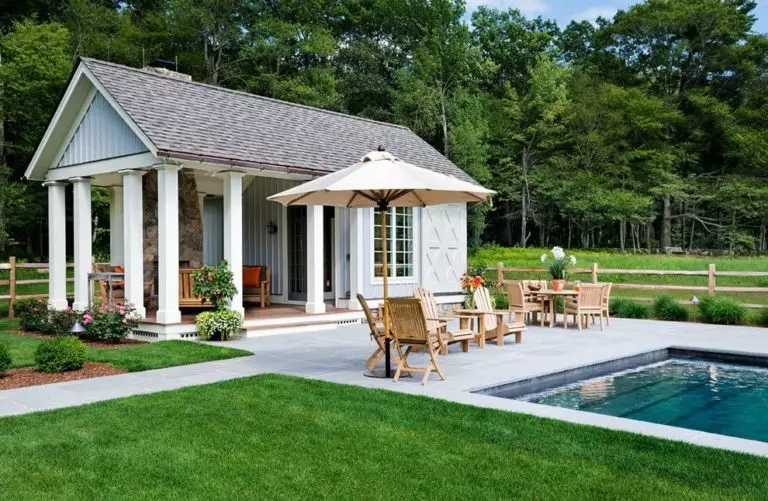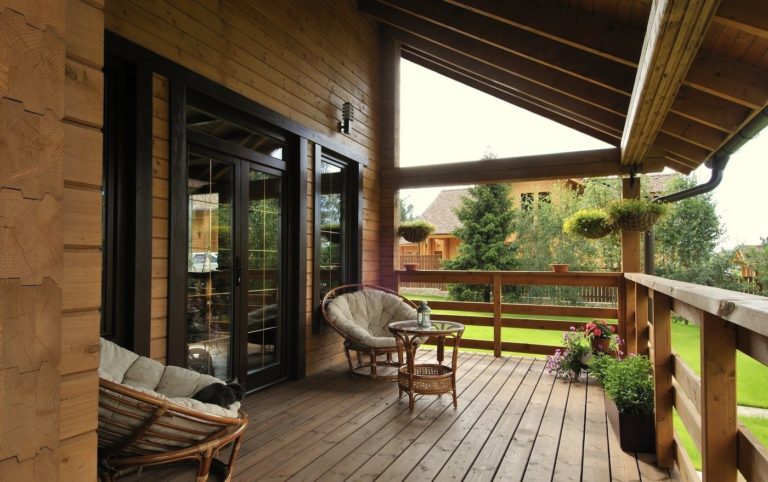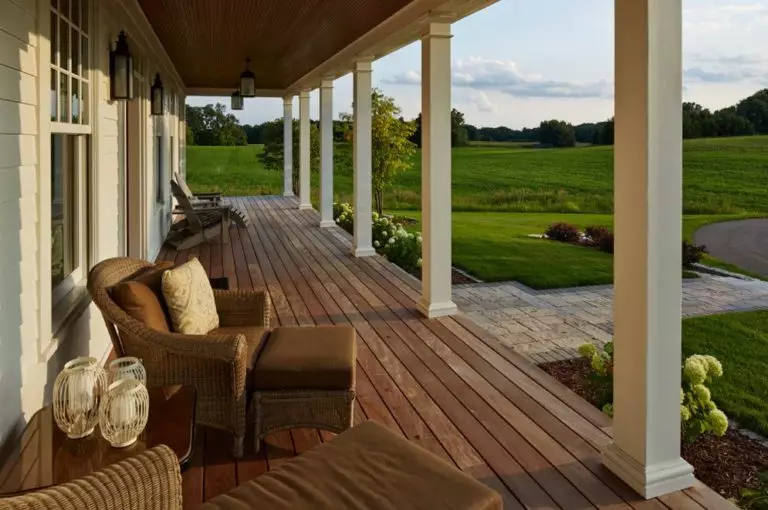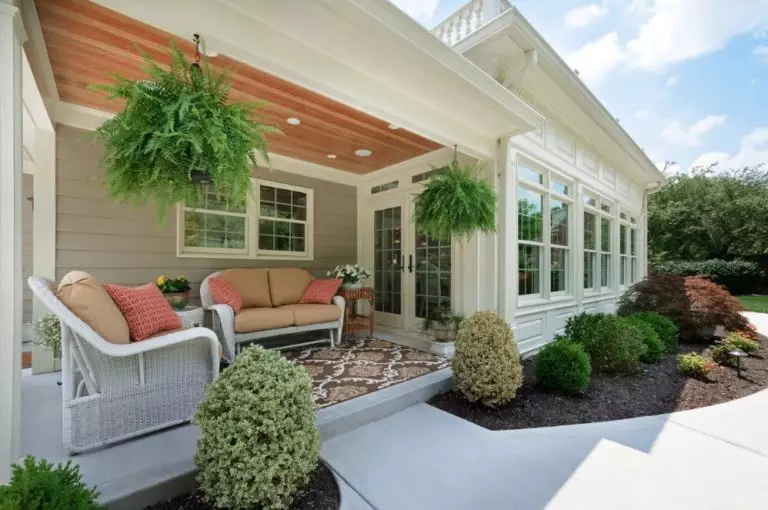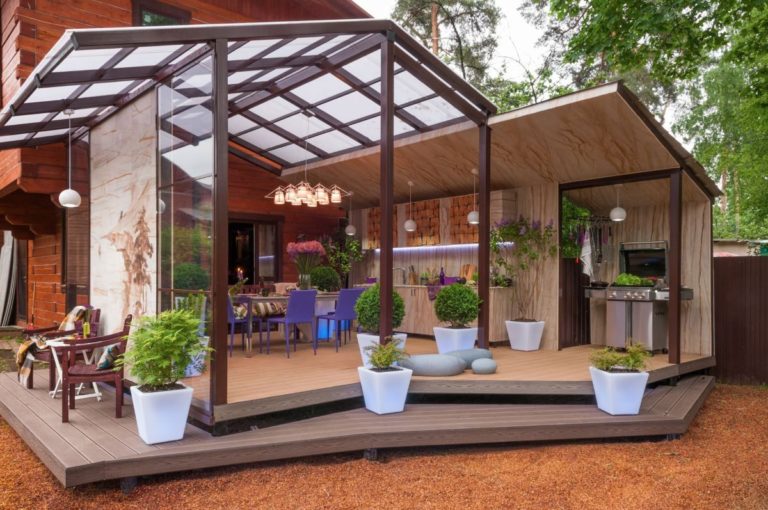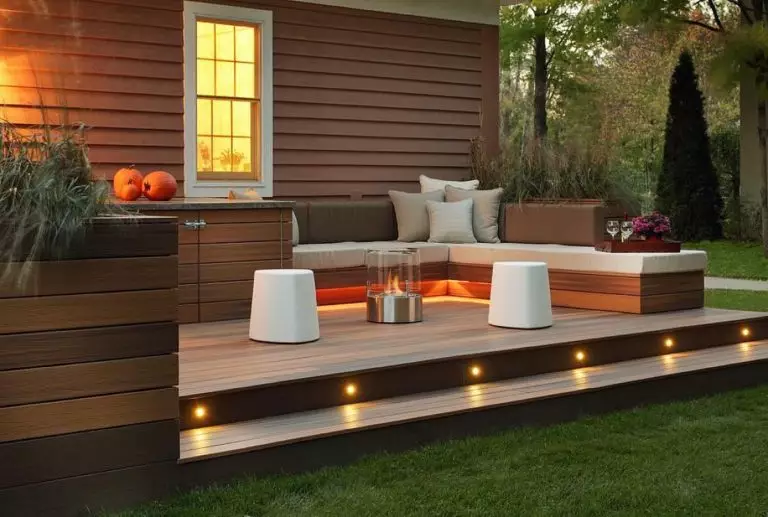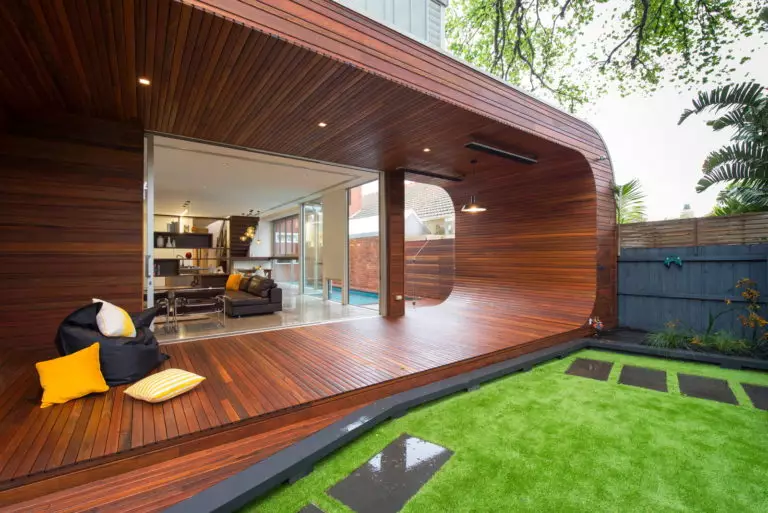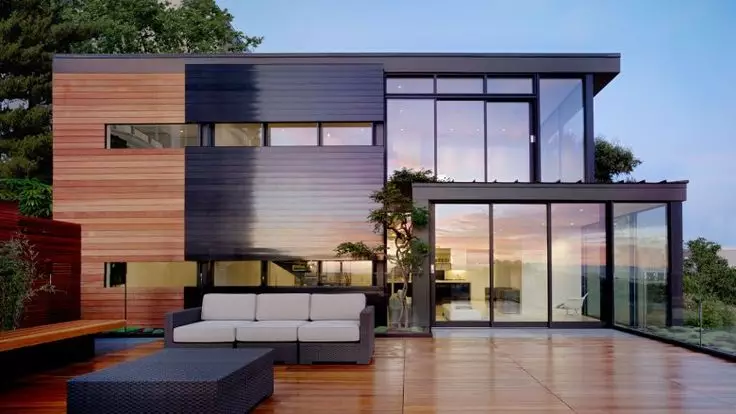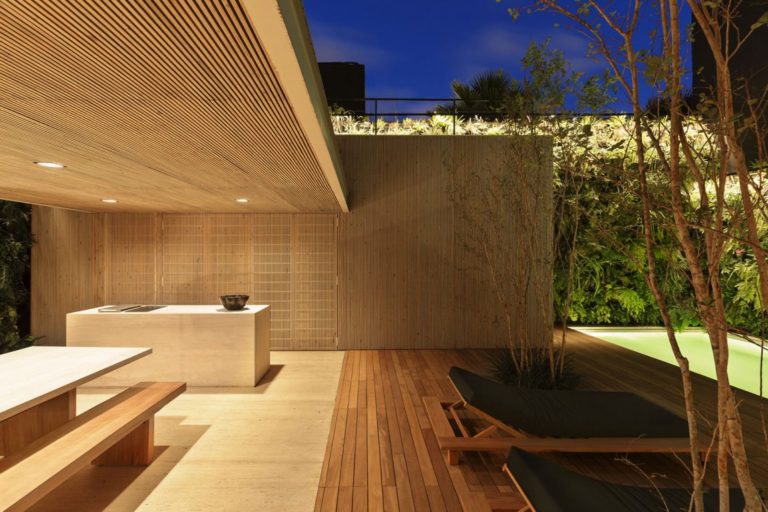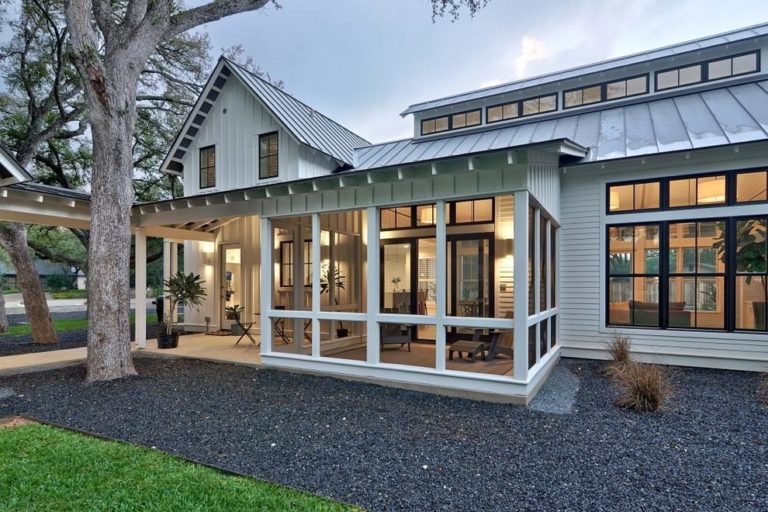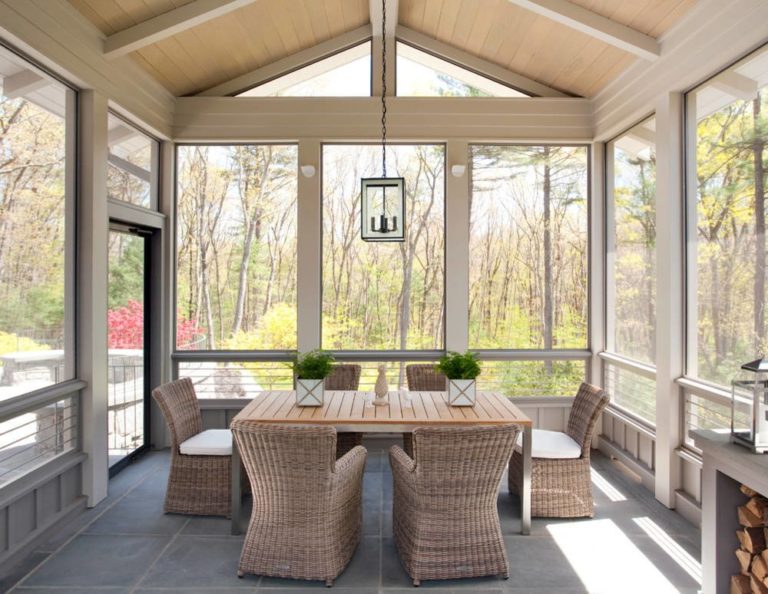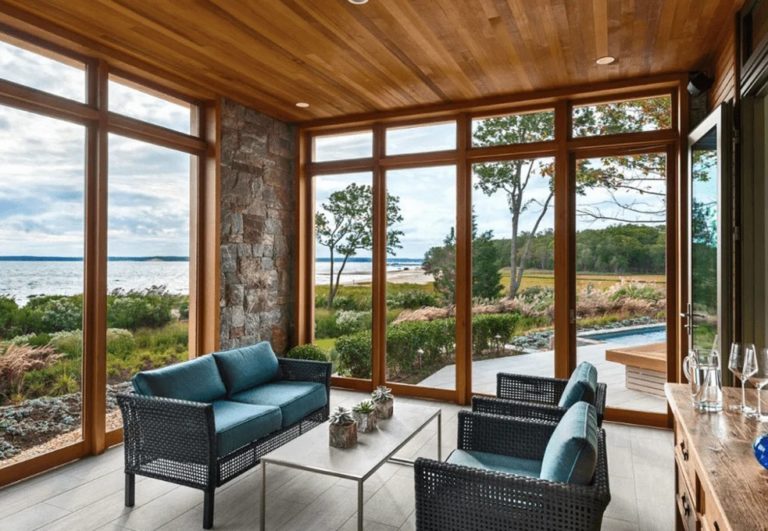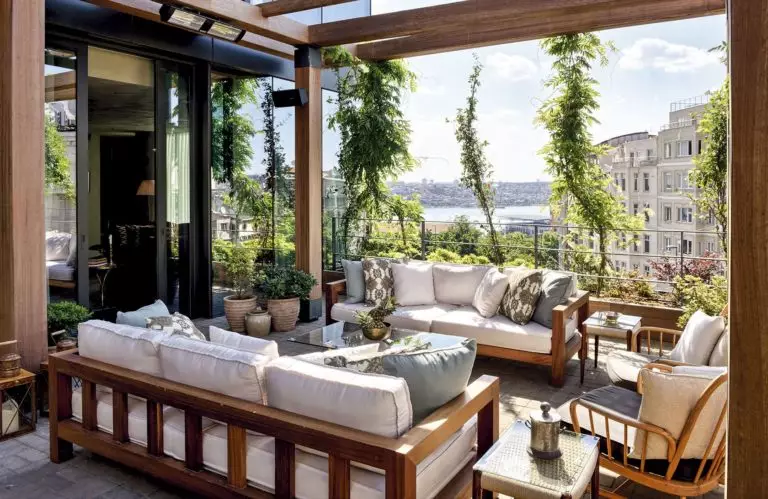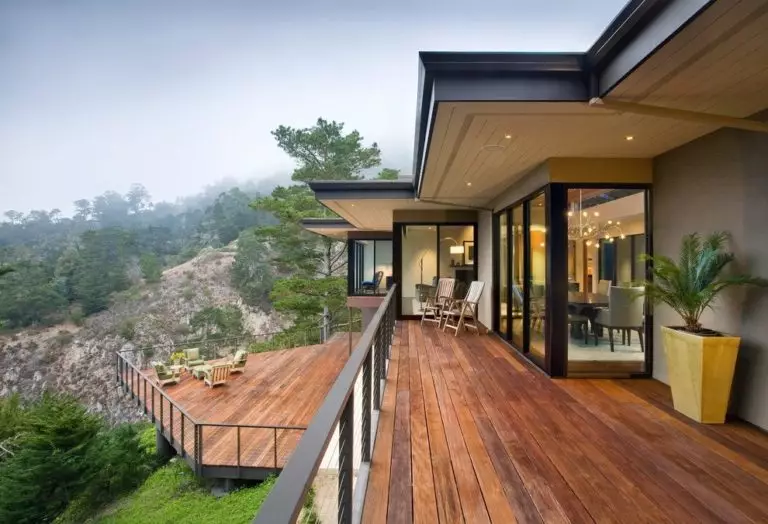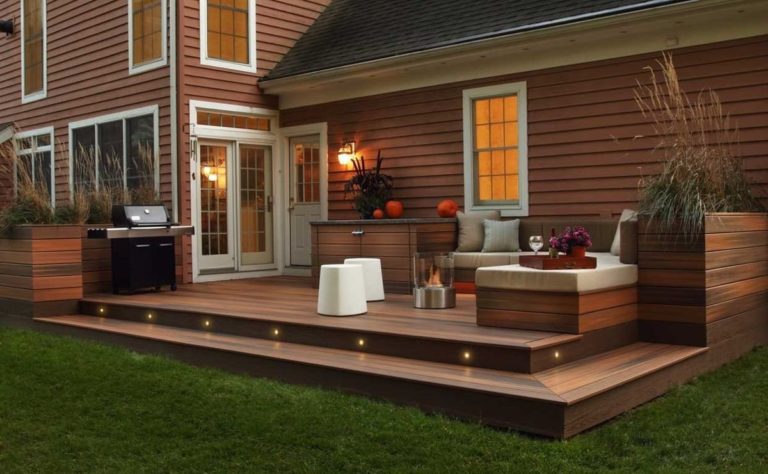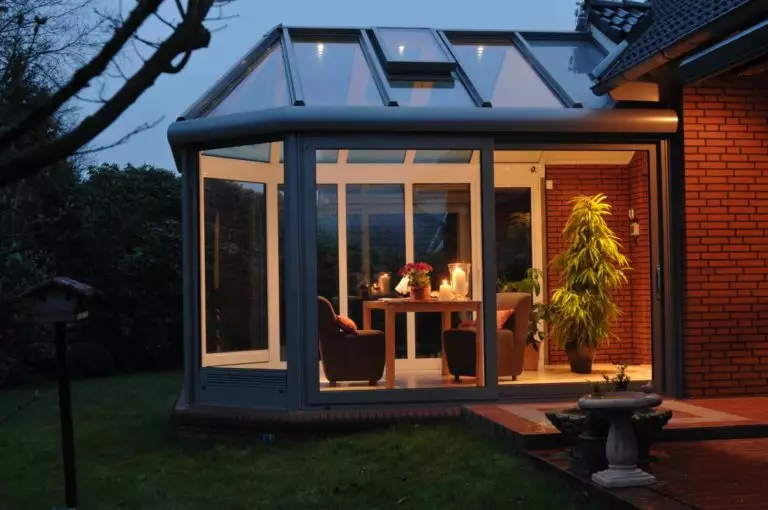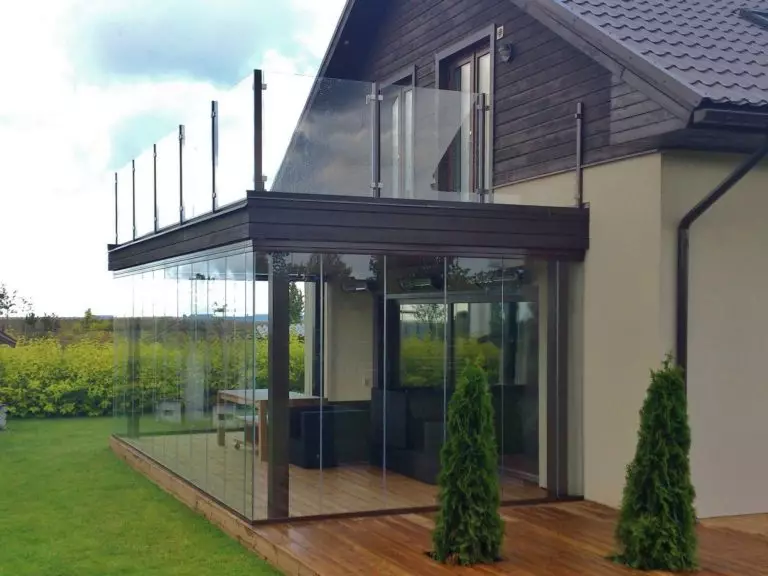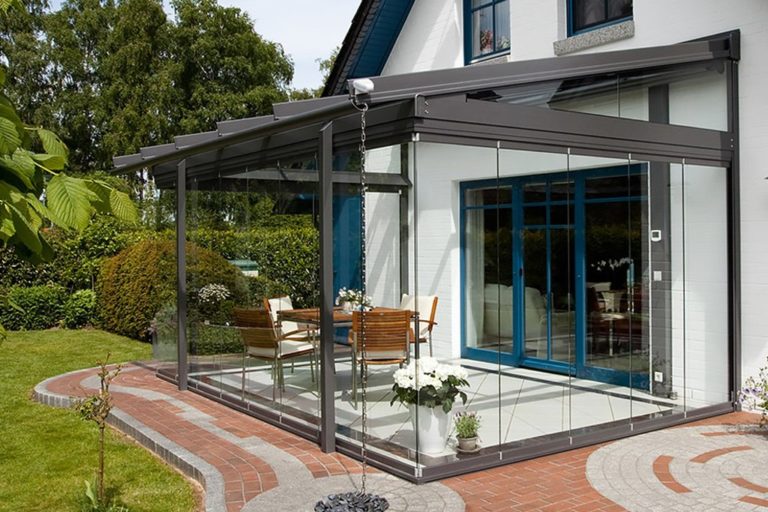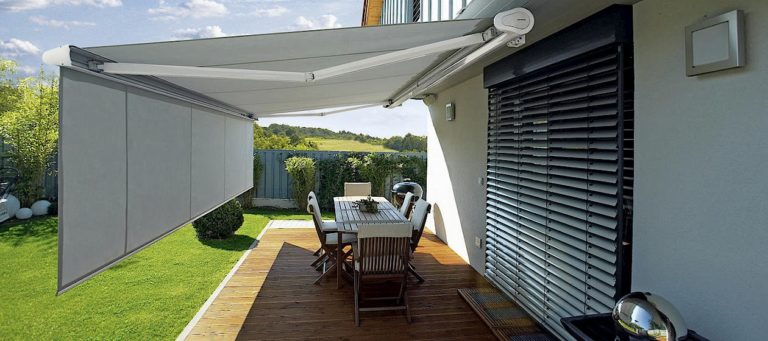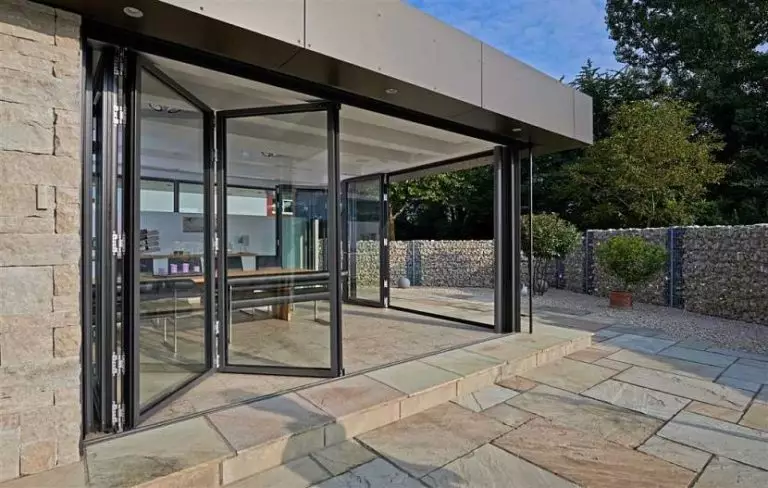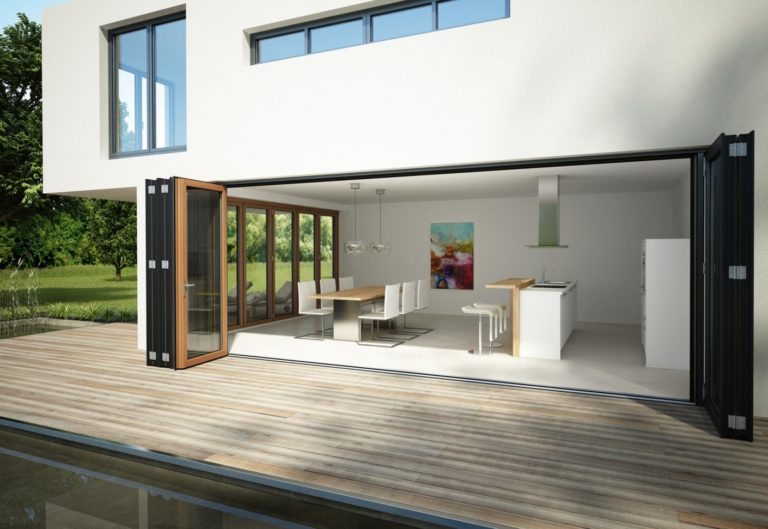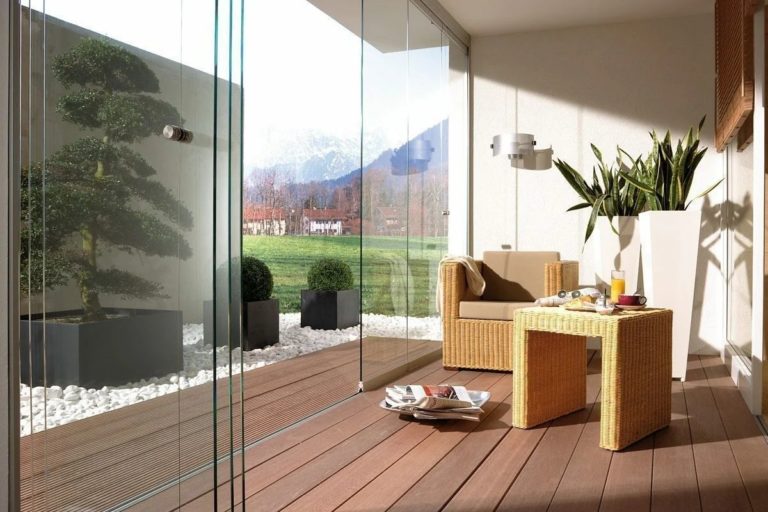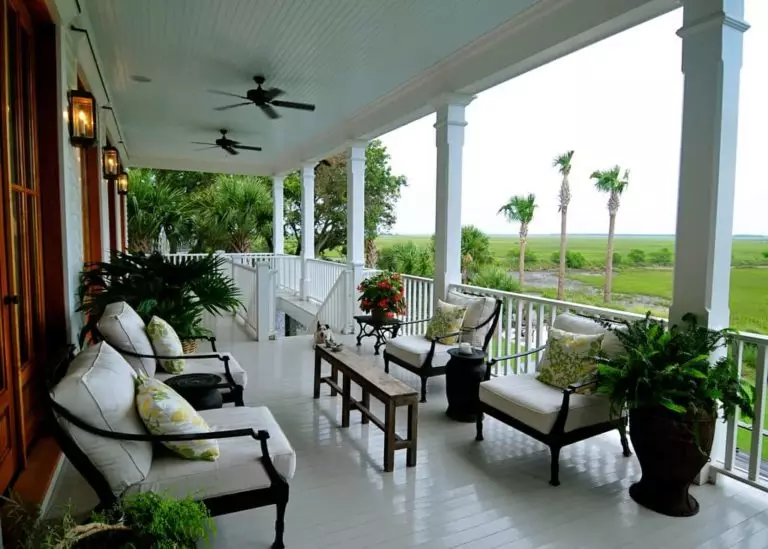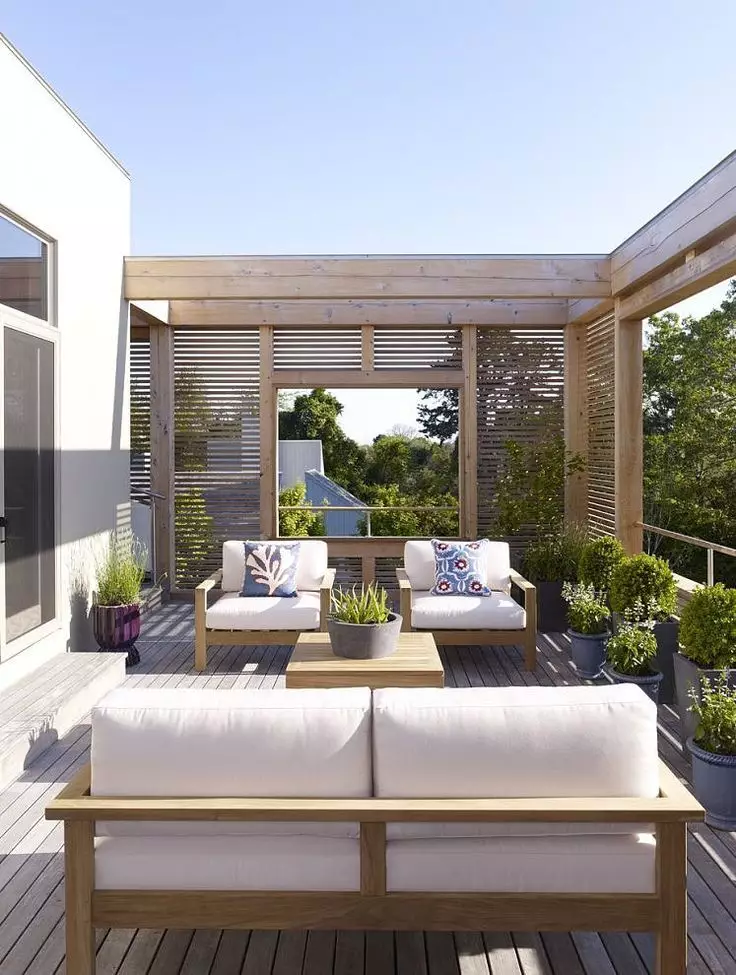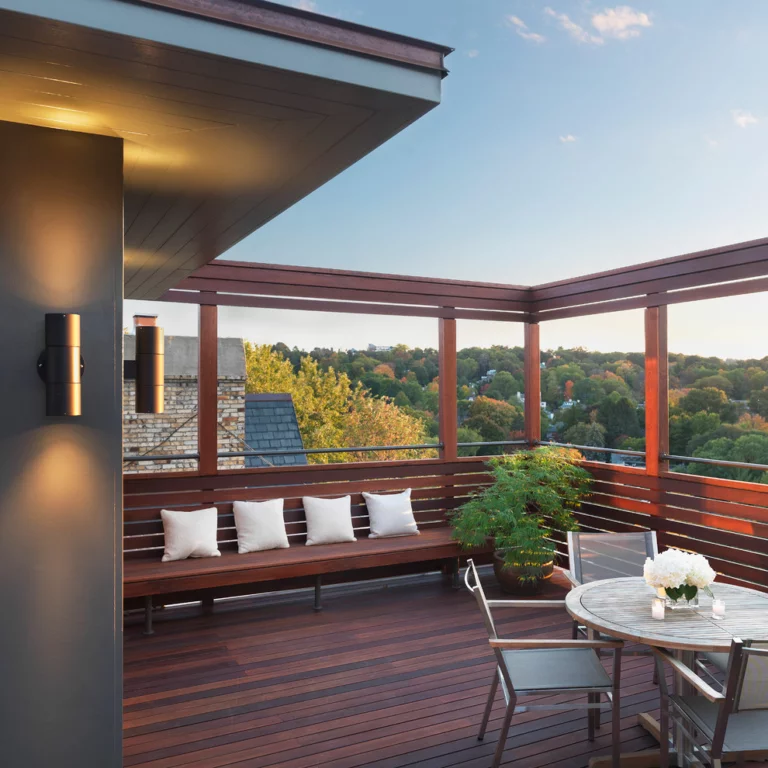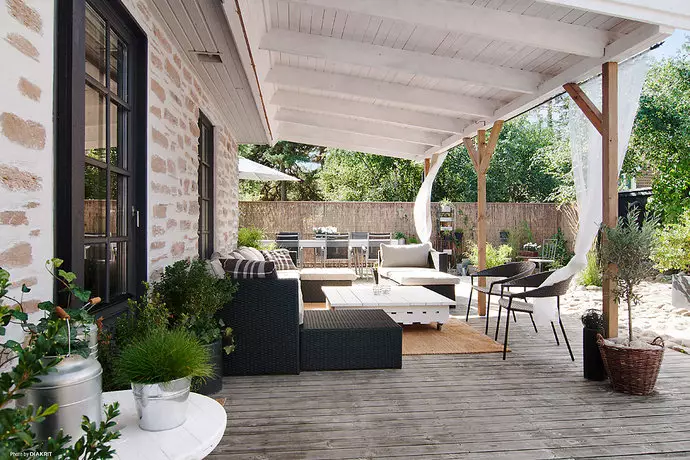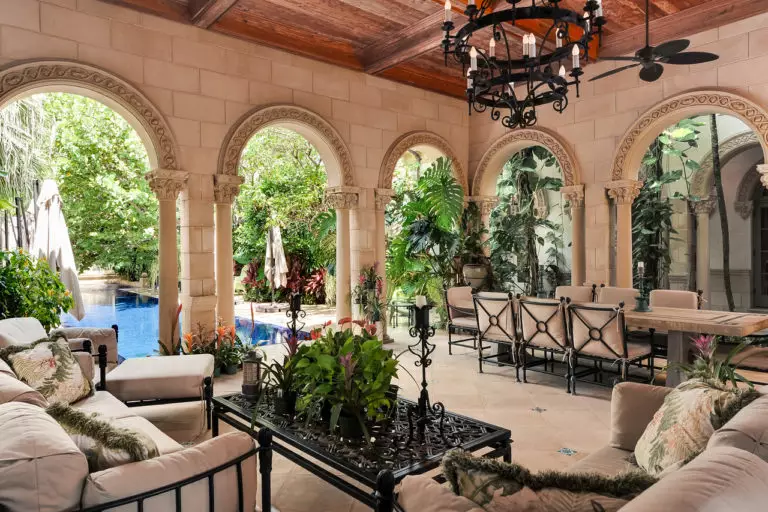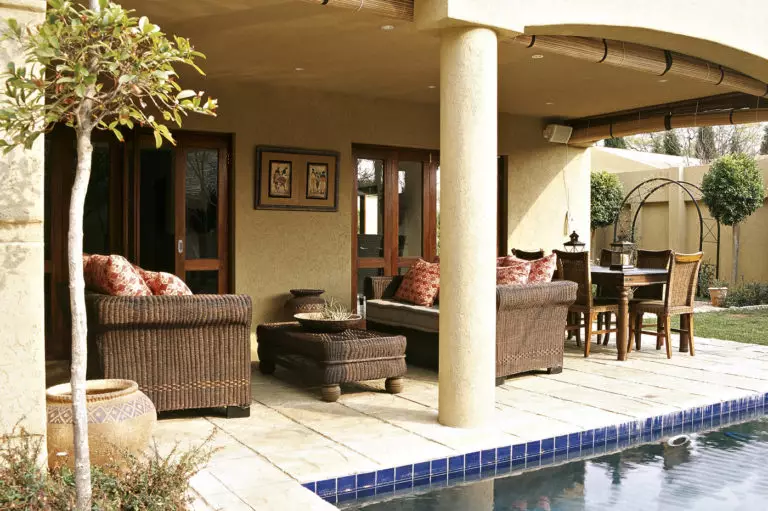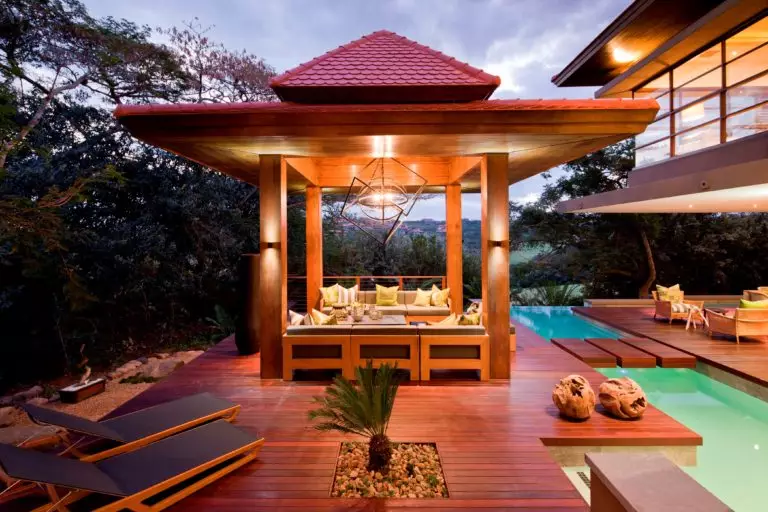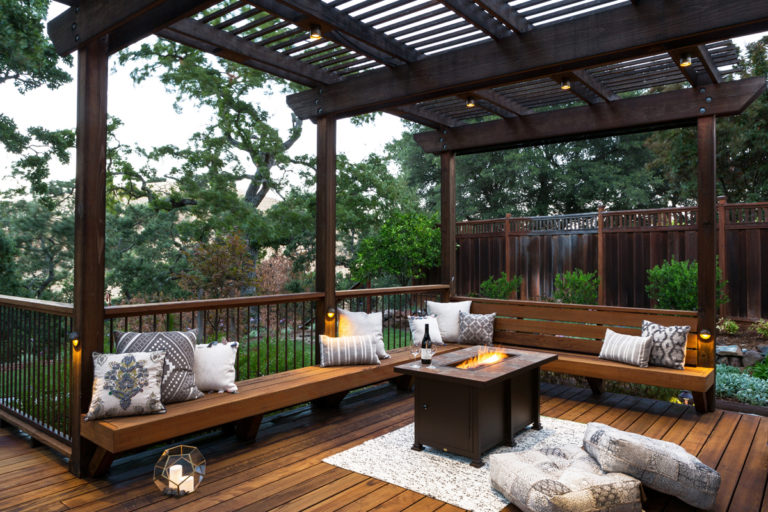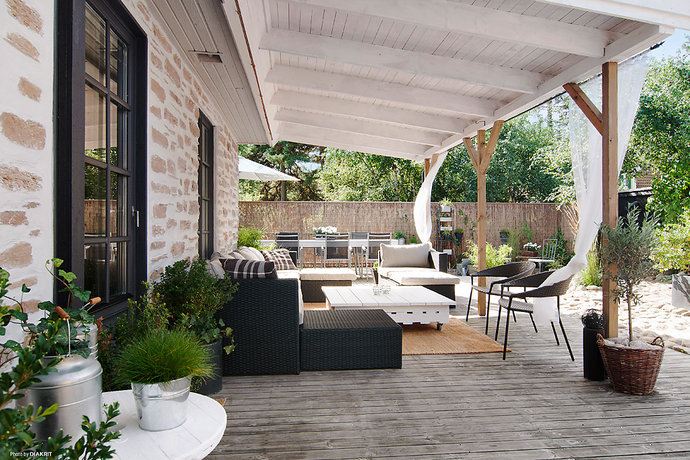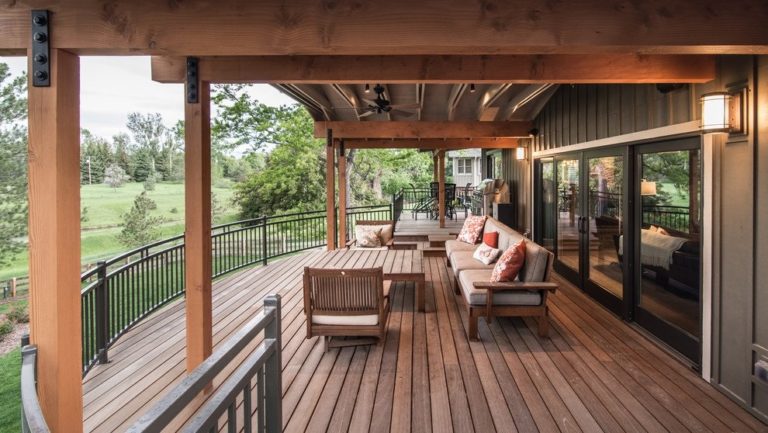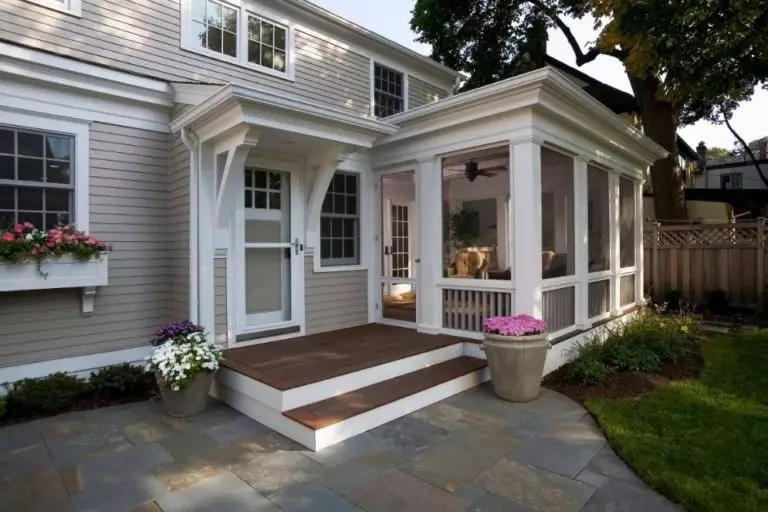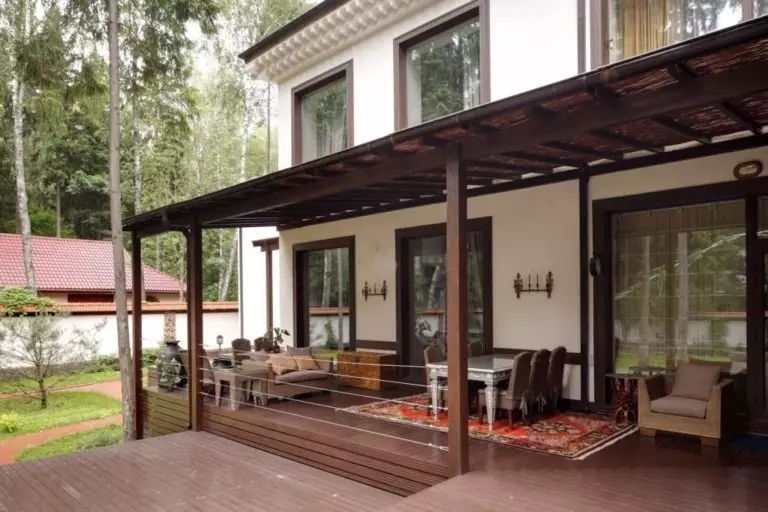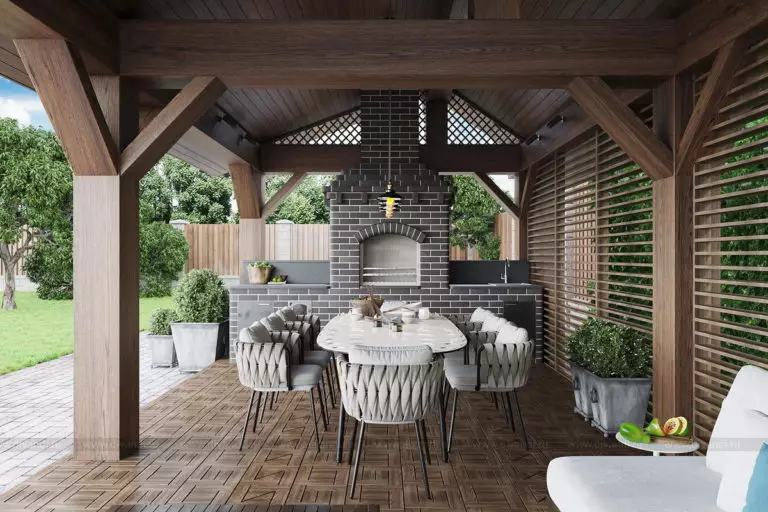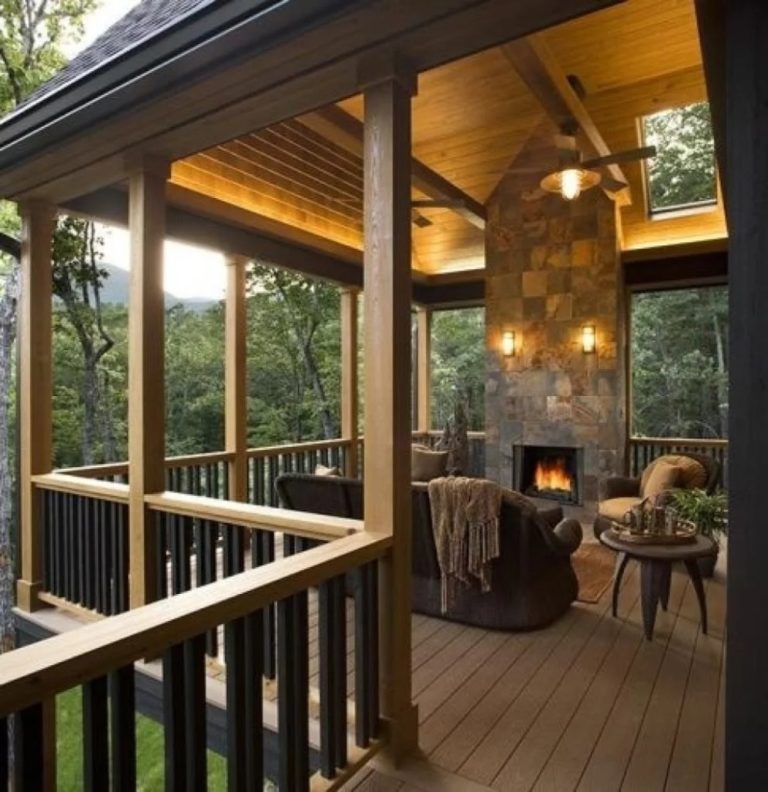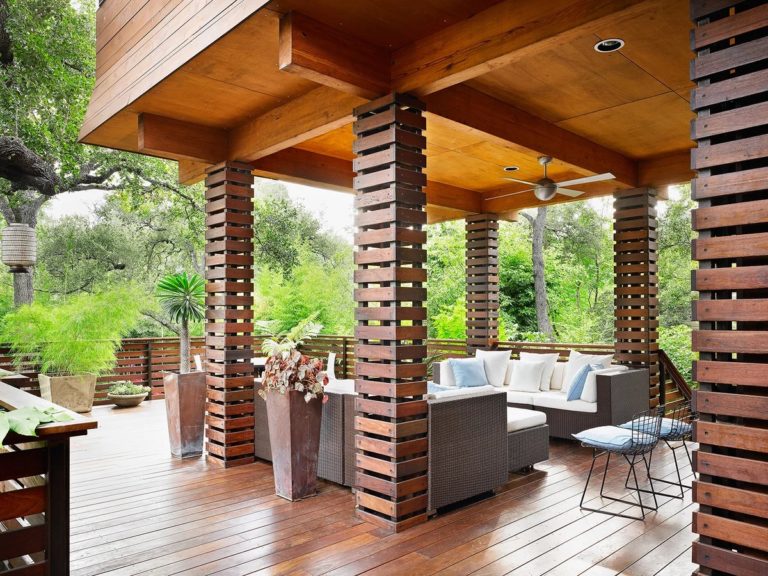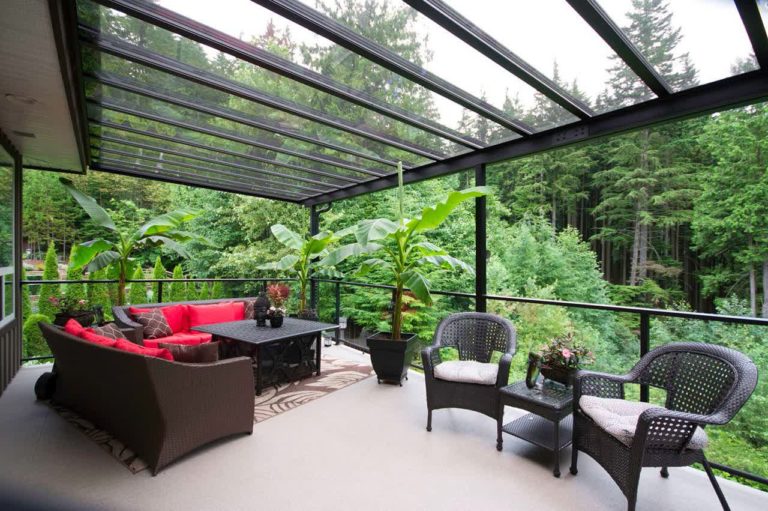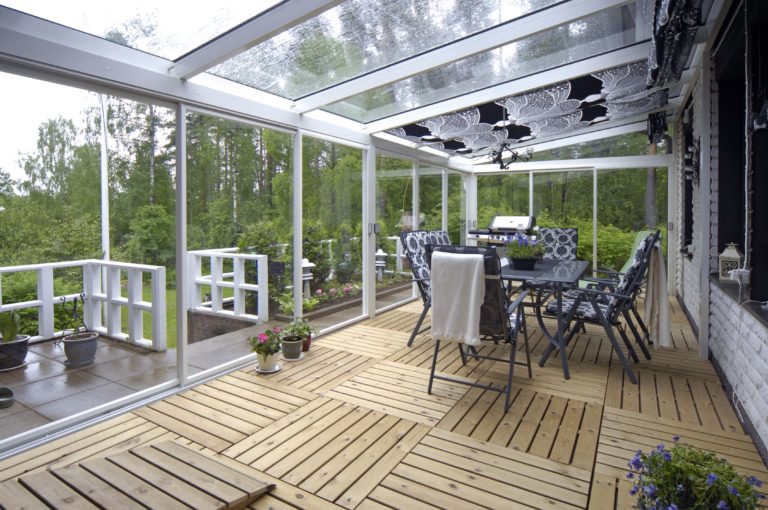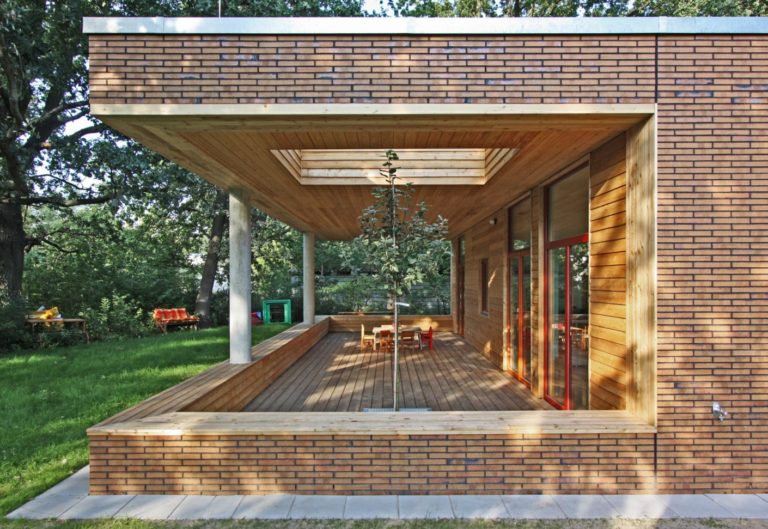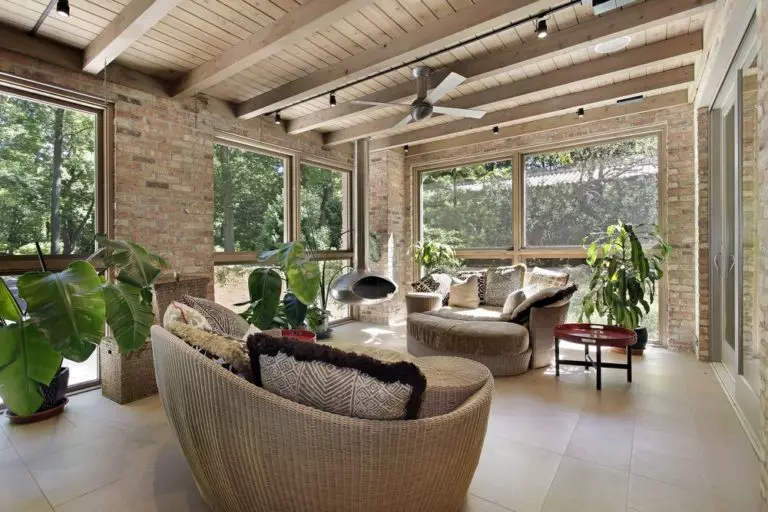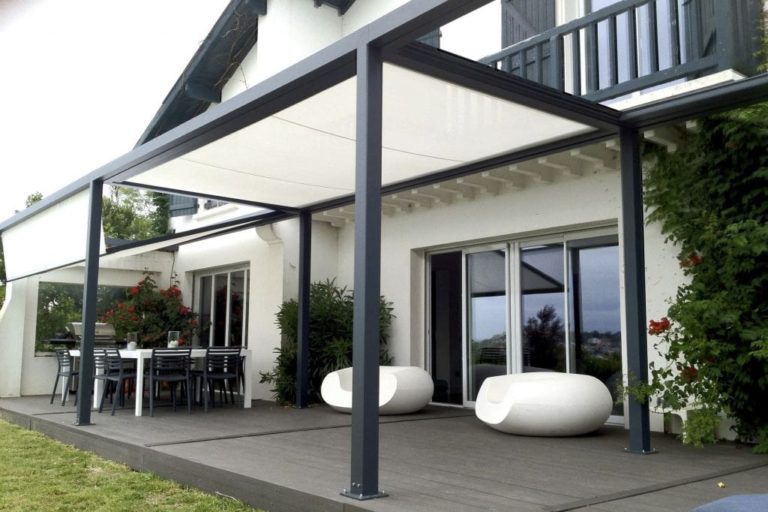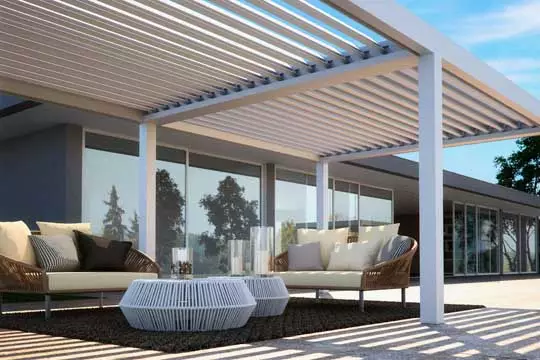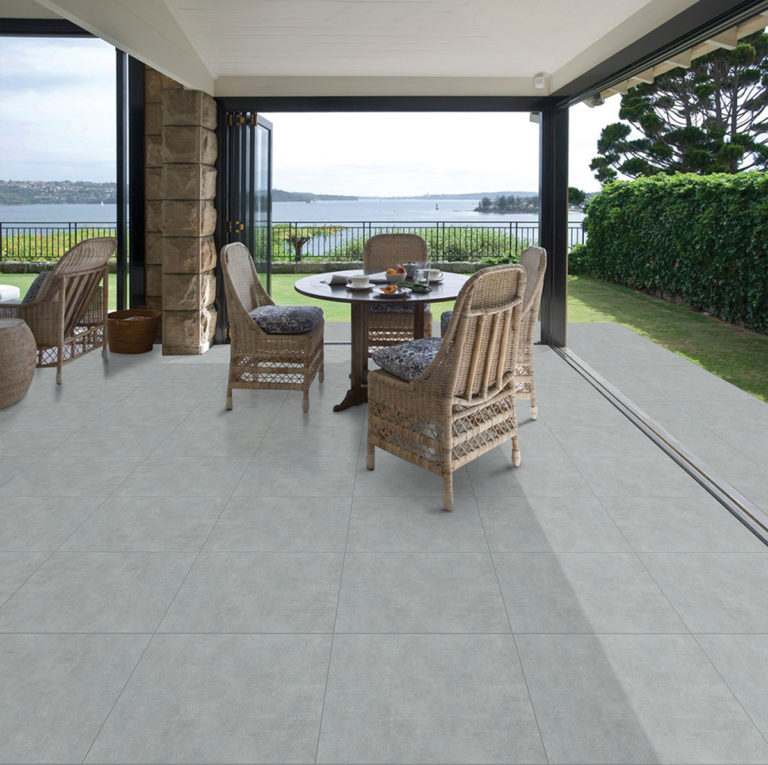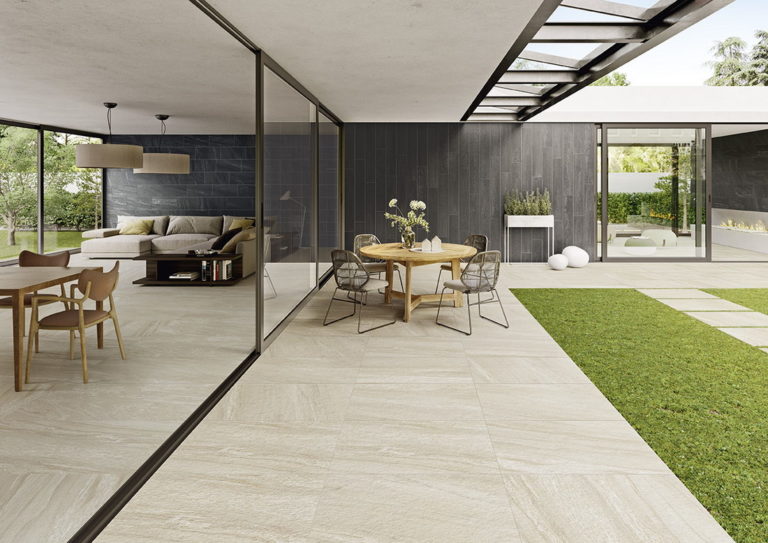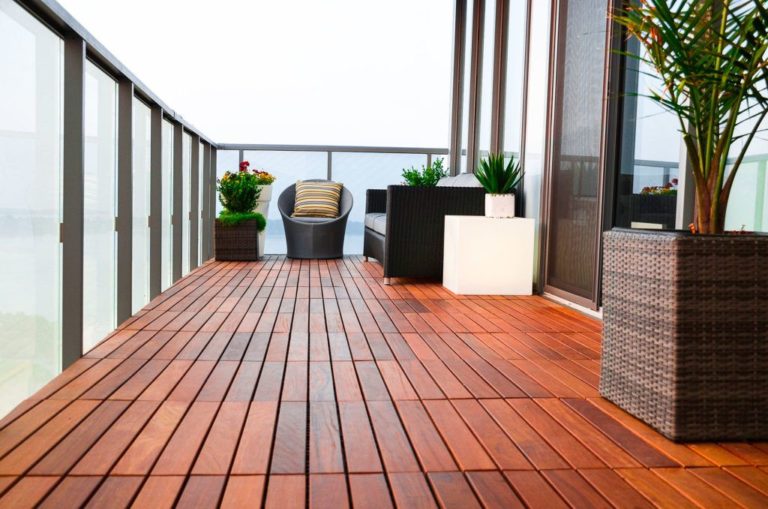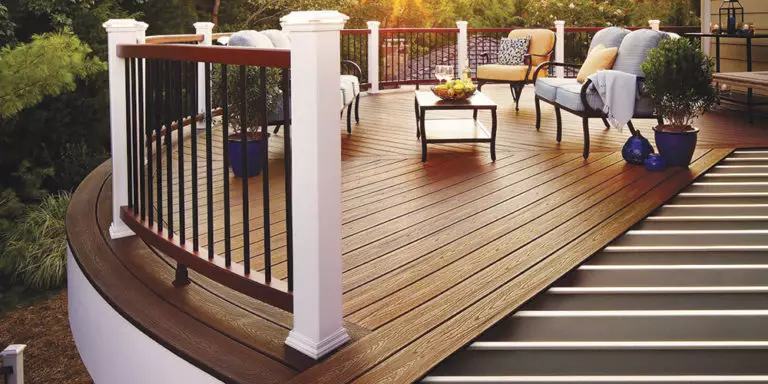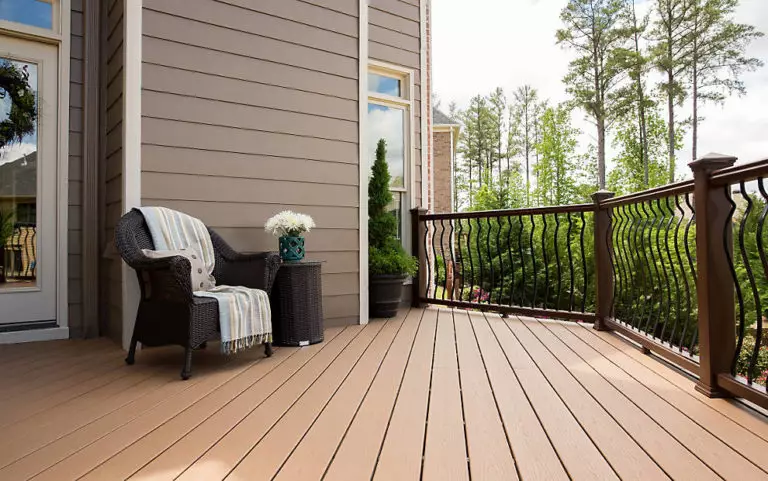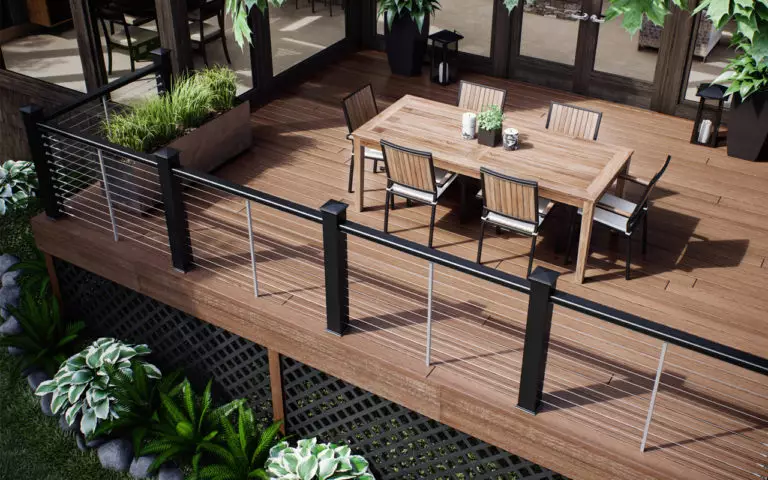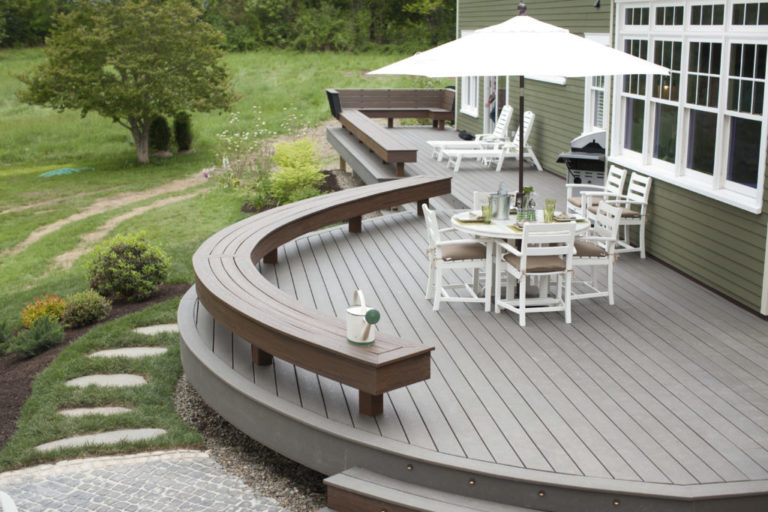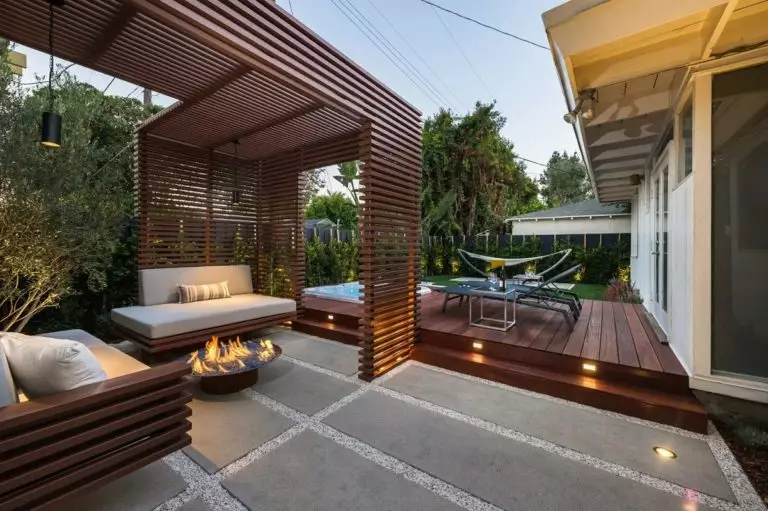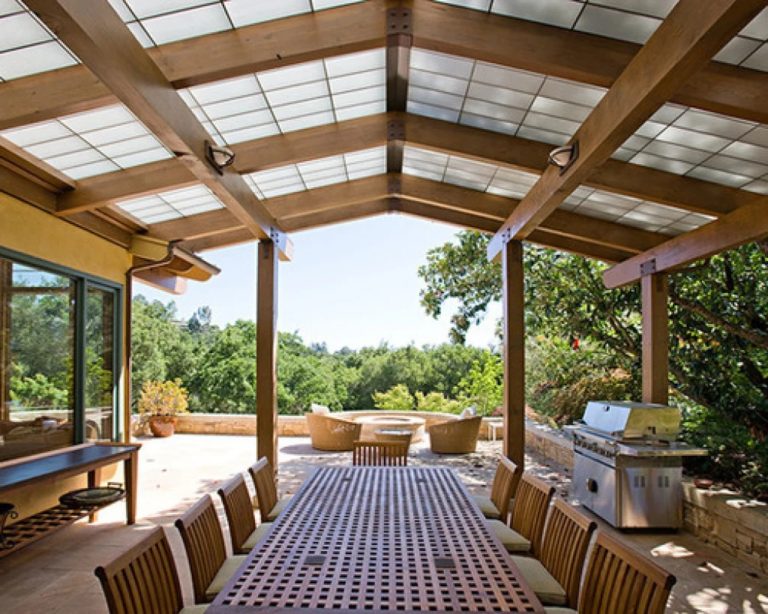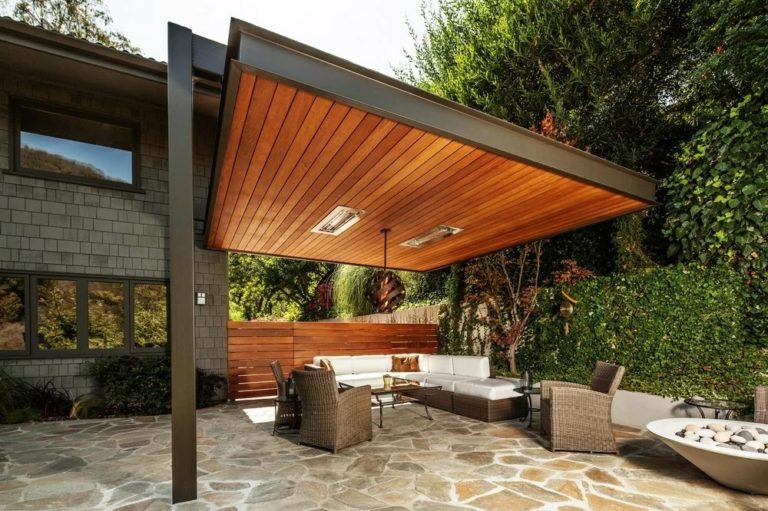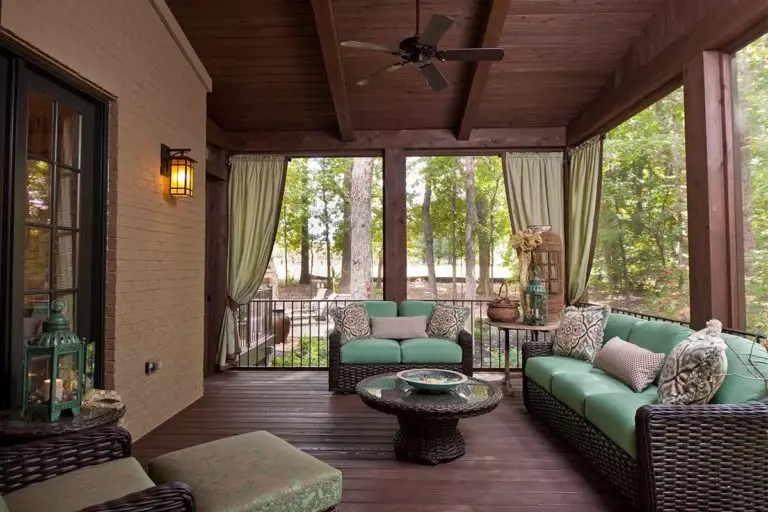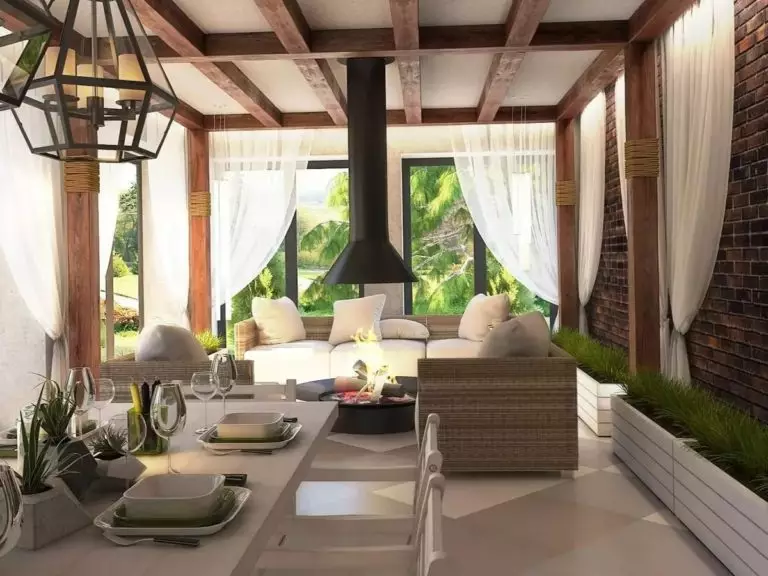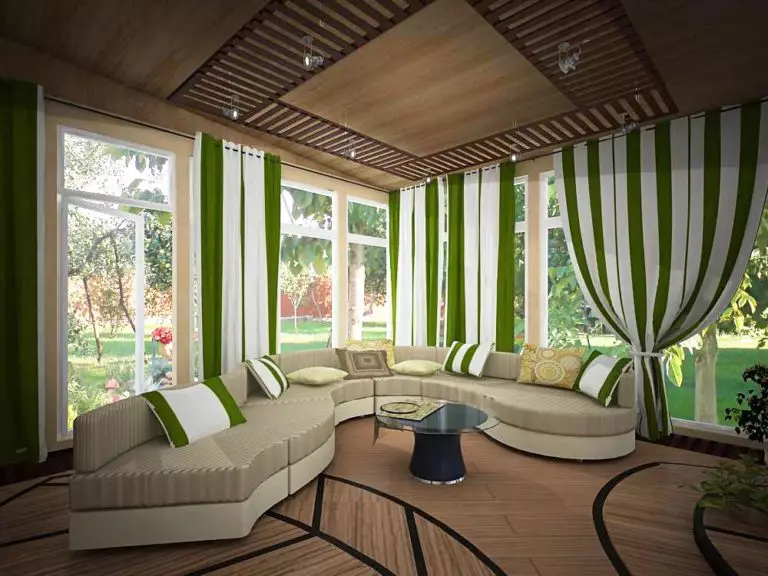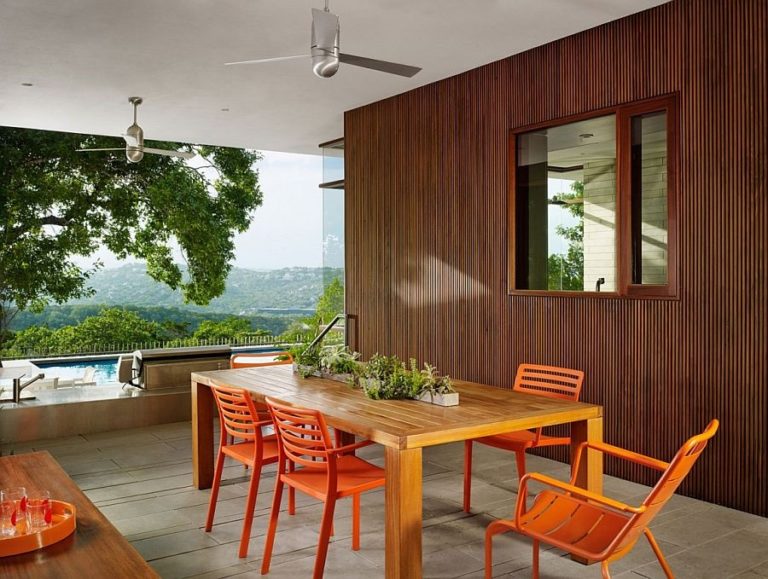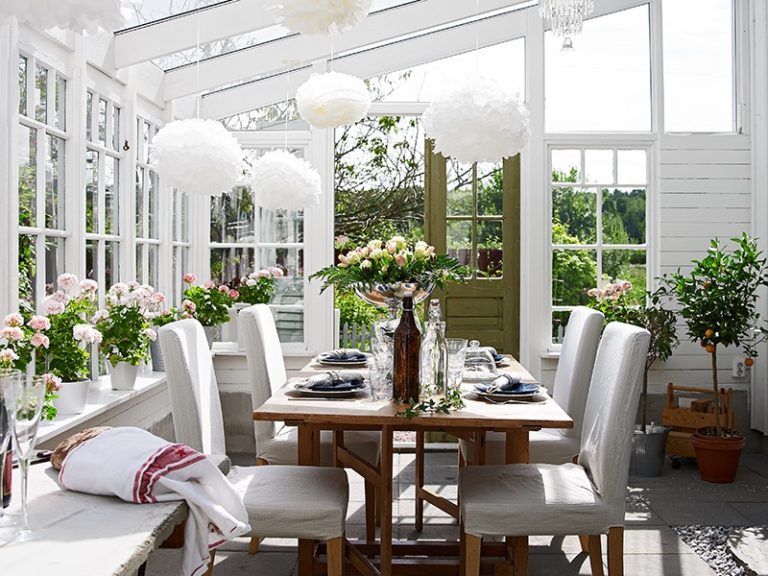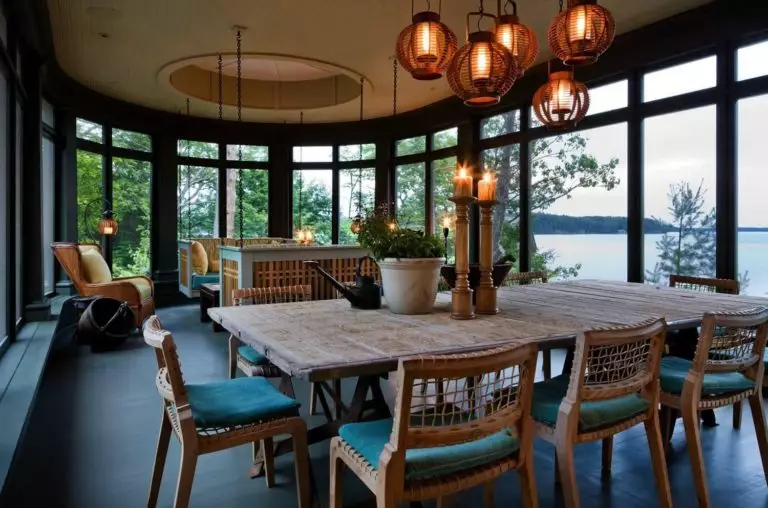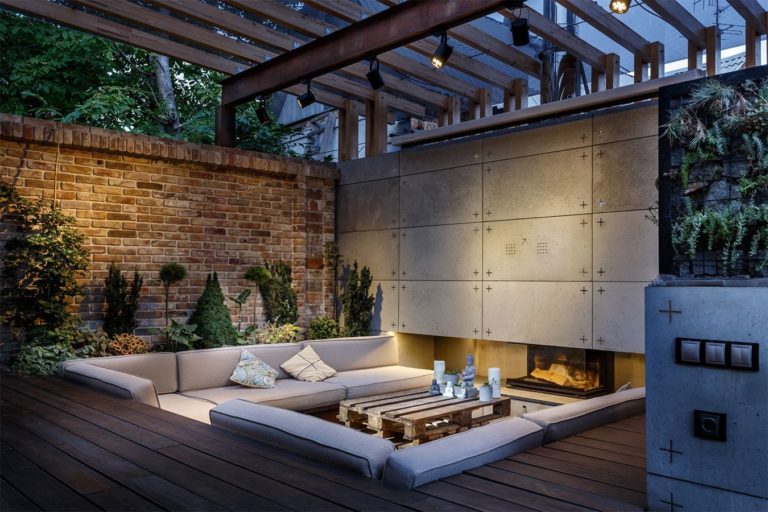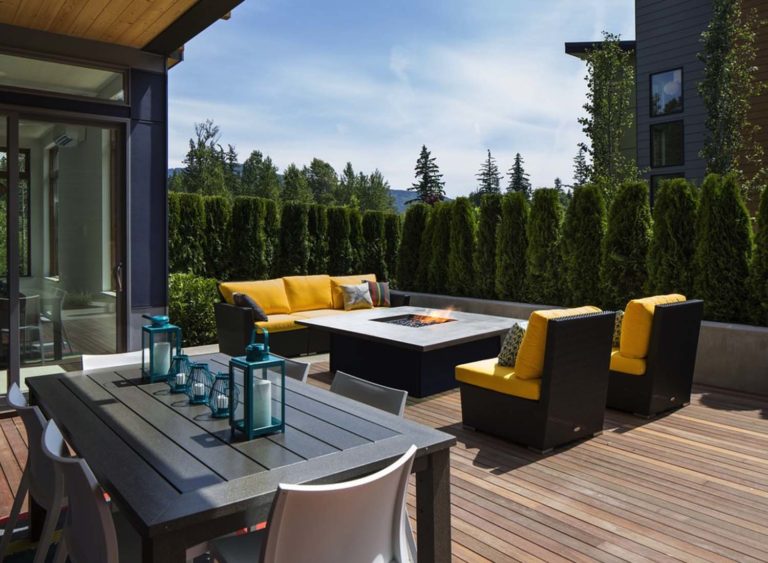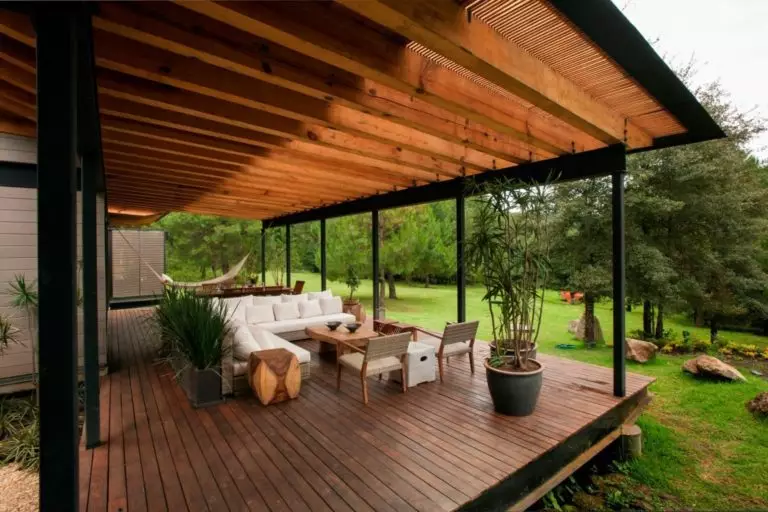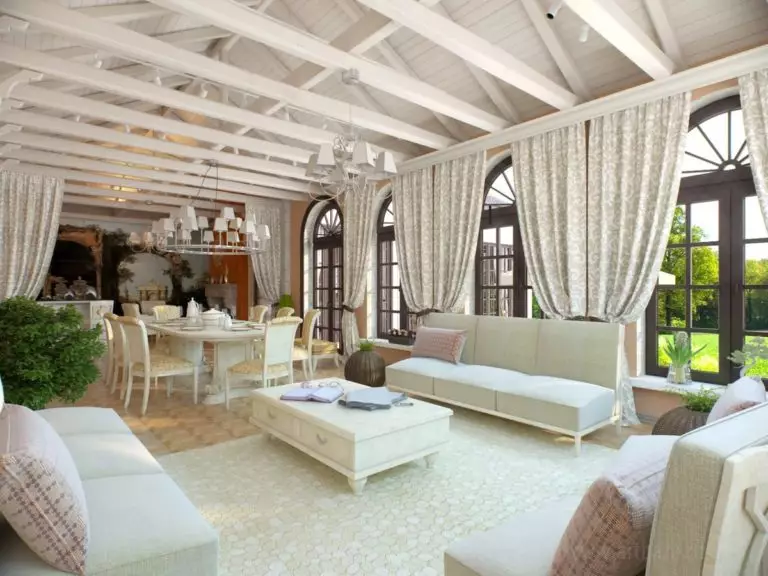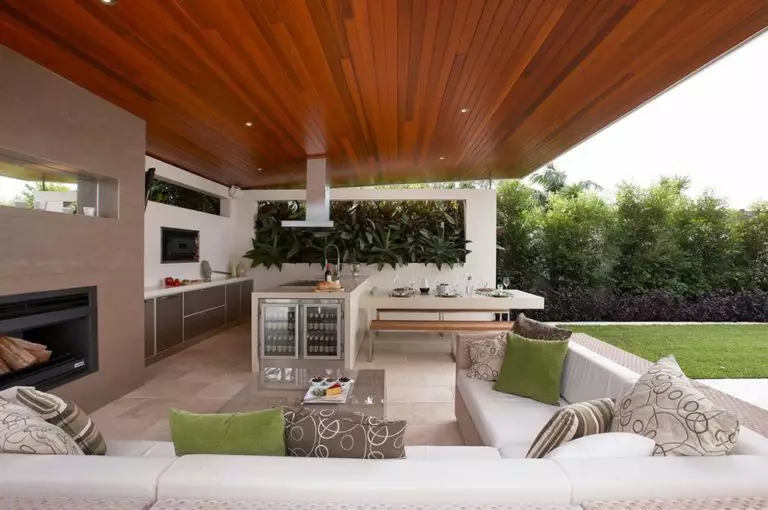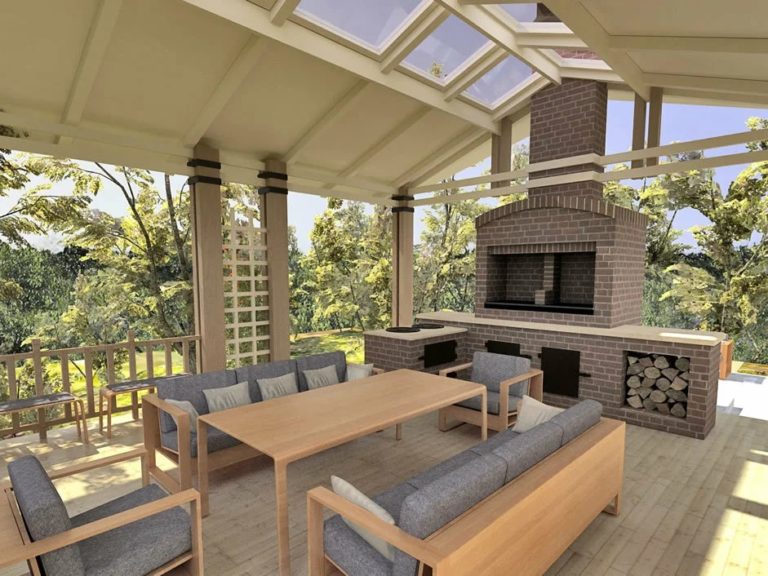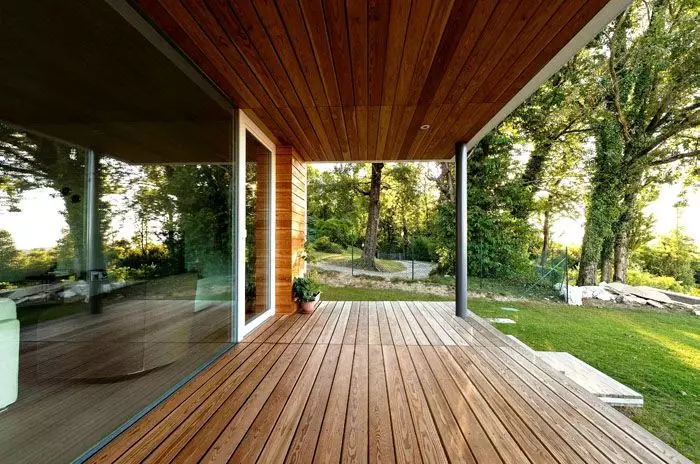
Private homes are good for many reasons. One of them is the opportunity to provide additional comfort for the family. This is done in different ways: they attach a garage, a veranda or a terrace in the garden. And a rare owner will refuse such an architectural element as a veranda or terrace.
The countryside is increasingly perceived as a place of relaxation and enjoyment of nature. The terrace creates comfortable conditions for a good rest; determine the appearance of the facade, giving it an individual style. A house with a veranda or terrace is much more convenient for those who like to arrange family dinners or friendly parties.
Terrace styles
An additional decoration of country houses is a modern terrace. A properly designed transition from home to garden will become a place of relaxation for the whole family. To make the annex look original and comfortable, its construction should take into account its functional purpose. The interior space of the terrace can be decorated in one of the following popular styles:
You can apply wallpapers, paints, etc. on walls and see how they look in various interiors.
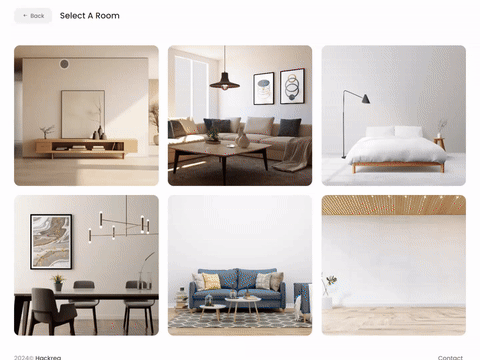
Types of Terraces
Owners of suburban areas pay special attention to the choice of not only landscape design, but also terraces and other outbuildings. Various types of raised platforms make it possible to design any complexity. Before starting construction, it is necessary to choose the type of extension taking into account important factors: climatic conditions, soil features, the possibility of installing a chimney, and supplying electricity. There are many options for building terraces.
Closed
Such terraces look completely isolated, have walls and a roof. The roof can be separately laid or be a common extension of the house. If the extension is planned to be used in winter, it must be insulated. For the frame use any material left over from the construction of the house – wooden beam, metal profile, brick.
For glazing, you can use simple glass in wooden, plastic frames, polycarbonate. The windows should be large, to provide good daylight. Some of them should open freely, without creating inconvenience during lunch or rest. If desired, window openings can be without curtains, equipped only with removable mosquito nets.
Open
The summer type of outbuildings is ideal for lovers of relaxation with comfort in the fresh air. The proximity of the country house to the coniferous forest, pond, green hills makes the choice of an open terrace even more attractive. The aesthetic option cannot be called practical. The extension will not protect from bad weather and intrusive insects. It is difficult to use in the cold season and at night. You should also carefully place expensive accessories and furniture.
A transparent roof or canopy will help save the situation. Instead of walls, you can use Roman curtains, drapery or any textile. A visual barrier will help create tall plants.
Glazed
The main advantage of this type of terrace is the ability to freely admire the surrounding landscapes. To use the terrace in winter, you need to do warm glazing. Based on the purpose of the extension, you can choose one of the following types of glazing:
Sliding or removable mechanisms
With the advent of new construction technologies, familiar outdoor terraces gained the opportunity to be considered full-fledged rooms. Now you can spend time comfortably, even if it rains outside or a strong wind blows. Mobile sliding structures allow more rational use of the interior space of the terrace.
Balconies
An annex in the form of a balcony above the terrace helps to acquire a new area and ennoble a private house. You can build a second floor above the veranda at any time during the operation of the building. It is better if the construction is planned at the stage of designing the house. The balcony will be installed on a common foundation, and the floor slab will serve as a protruding visor.
If the idea to attach a balcony appeared after a while, before starting work, you will need to evaluate the type of foundation. Equally important is the location of the terrace in relation to the building. If there is no way to make an opening in the main wall, access to the balcony can be arranged by stairs from the street.
Patio
The main feature of the patio is the absence of any partitions and awnings. You can see that it is a terrace only thanks to the concrete base in the middle of the yard, the presence of furniture. Design is chosen based on the occupied area and the preferences of the estate owners. Often the corners of the relaxation zone are surrounded by flower pots, ornamental shrubs, small fountains.
The patio can be adjacent to one side of the house or be at a distance, for example, by the pool, in the shade of fragrant acacias. The patio place is often equipped at the rear wall of the house, but there are also ceremonial accommodation options at the front door. Open areas for recreation can have a different shape. Designers offer several directions for the design of patio terraces:
Terrace location options
The construction of terraced houses gained wide scope. A convenient extension not only serves as a decoration, but also protects the house from winds and sunlight. You can attach a terrace to the house from any side. If it is intended for recreation, fun feasts, sports, it is better to deploy it behind the house, hiding from unnecessary views of neighbors and just passers-by. The veranda-hall should be located on the side of the front door. So it will also serve as a porch.
A terrace can be built along any wall. Better if she will have an entrance to the living room or kitchen. If the area around the house allows, the extension can be arranged along its perimeter. Convenient minimum width – 150 centimeters.
Roof terrace – an unusual option for organizing a vacation spot. The original location greatly complicates the design. It is necessary to take into account the characteristics of the material of the walls, the strength of the roof. A wooden house may not be able to withstand a heavy construction with furniture, therefore it is only possible to realize a plan on brick houses or from aerated concrete. Special attention should be paid to safety and a high, stable railing.
Size and designs
The optimal size for the terrace is 2×4 meters. On it can simultaneously be a family of 4 people, without feeling the lack of space. In the room you can put a small table, several chairs, a shelf with dishes and even a sofa. For group gatherings, dances, parties, a terrace with an area of at least 7×2.5 meters is required.
The shape of the veranda of any type depends on the preferences, financial capabilities of the owner of the house. The soil features, climatic conditions of the region, the design of the main buildings and other factors are also taken into account. More often rectangular terraces are found. This option is popular because of its simple installation, functionality. Difficulties arise in the construction of round, trapezoidal, oval, multi-level terrace. The roof supports for such structures are developed according to a special design.
Materials for creating terraces
The choice of building materials for extensions is very large. It depends on the purpose of the terrace, the personal preferences of the owner. Any design should be built according to the preliminary plan and meet a number of mandatory requirements. The building materials used must be refractory, strong, and stable. Basically, frame terraces are made of wood, brick or metal. The type of material chosen directly affects the final result.
Wooden
Natural material is great for building terraces. The wood, like nothing else, harmonizes with the vegetation in the garden, emphasizes the decorative style. With the help of small bars, you can effectively hide the defects of the facade, and ennoble the transition from room to garden. To increase the strength, builders recommend using hardwood boards. Oak and teak are moisture resistant. The exotic trees differ in the original texture.
Wooden terraces can be of any type. For the construction of open structures, it is enough to install a wooden floor and beautiful wooden railing. In the closed version, casement, sliding windows can be provided.
Transparent materials
To make the terrace cozy in any weather, transparent coatings on the windows and roof will help. For such a type, the frame is steel, wooden, aluminum material. Depending on the type of transparent materials, various technologies for their fastening are used. The walls and roof are made of the following translucent sheets:
Brick
Bricks are often used for the construction of open, closed terraces, their summer and winter options. Its main advantage is high strength characteristics. Specialists guarantee the service life of such verandas is more than 100 years. Much longer than annexes made of wood or foam blocks. Brick passes oxygen and does not emit harmful substances. It is not susceptible to decay, attack of insects, and microorganisms. No additional processing needed. On this terrace is always warm and dry, there is a healthy atmosphere. It looks solidly, safely and reliably.
Metal
Previously, metal structures were not popular due to low thermal insulation properties. Modern technologies have made such terraces popular due to the improved characteristics of the material. Mount supports are made of metal in two ways: bolted and welded. In the first case, the elements are twisted with bolts and can be disassembled if necessary, and in the second case they are welded and cannot be dismantled. Both methods are reliable and easy to install.
Bearing elements can be made of round, profile pipes or twin profiles. After joining, all joints are treated with an anti-corrosion compound. For the manufacture of terraces, used materials are suitable, provided that they are without cracks, rusty pockets, voids.
Design features during construction
Before proceeding with the construction of the terrace, you will need to familiarize yourself with the stages of construction. It is immediately necessary to determine the location of the extension and its type. Indicate the height, width and area. The next step will be an estimate. If you can’t do the porch with your own hands, you need to consider the payment of employees, the cost of consumables and tools. Construction work must take place strictly alternately and according to certain rules.
Flooring
The floor for the terrace, which is a street zone, must be strong, reliable. It can be made of any material that meets the following characteristics: low level of wear, frost resistance. Also, floor coverings must have anti-slip characteristics and not accumulate moisture.
One of the best flooring materials for any type of extension is the laminated wood. Terrace boards are made from wood flour and polymers, which are added for better hardening of the components. The output is a beautiful, non-slip, very durable material without knots and cracks, imitating a natural tree. Cons – a visual, tactile difference from a real tree.
Porcelain tiles are suitable as flooring for stone terraces. When choosing a material, it is necessary to take into account the large weight and the possibility of weighting the structure. Lay on a prepared surface on a special glue. Among the advantages can be distinguished frost resistance, a variety of design, the ability to repeat any natural stone. Cons – low impact strength.
Outdoor terraces are often made of concrete slabs. Long-life products are easily laid on cement, sand screed, if necessary, easily repaired. It is enough to simply replace the damaged element. Cons – Heats up in the sun, a high probability of uncontrolled subsidence.
For enclosed annexes use natural wood. If the cottage is fully timbered, it is possible to make a porch of strong rocks, an open terrace. The advantages of the material include good cushioning properties, a large selection of structures, sizes, colors. Cons – the complexity of care, the need for regular treatment against fungus.
Any flooring on the outdoor terrace must be laid at a slight angle. This will create conditions for free outflow of water, exclude the possibility of leakage of moisture into the joints and deformation of the floor.
Side rails
Not every terrace provides for fences. Sometimes the need for railings or walls occurs later. Install fences for the safety of young children, as protection from wind and rainfall, to improve the design of the veranda, expressively designate a recreation area.
Any fence consists of a frame and filling. Appearance, design features will depend on the destination. They can be installed as a permanent element or temporary, only at the time of any event, until the summer season ends. Material and type of execution choose suitable for the overall design of the house and terrace.
Often are used synthetic combined boards, siding. Wood-polymer composite is visually similar to wood, but more durable. It does not swell and does not fade. PVC fences are preferred because of their cheapness. The widespread distribution of material for walls and railings is hindered by fragility.
Natural materials for fences are preferable. Forged metal and profiles should be graceful so as not to burden the structure and increase its weight. Transparent fencing is made of laminated very durable glass. Stone railings in the form of balusters are suitable for balconies, brick, gas silicate terraces.
Roof or canopy
You can give the terrace a noble appearance due to the roof or canopy. There are many interesting options for terraces. If the veranda is being built close to the house, identical roofing material should be used. The roof of the extension must have a gentle slope.
An economical, practical material for canopies and roofs – roll roofing. Flexible tiles are popular due to their attractive appearance and easy installation. You can cover the terrace with any material.
For the manufacture of canopies, it is better to choose corrugated board, galvanized iron sheets. Plastic materials can be used in the design of various styles. Wooden structures, polycarbonate canopies also fit into most architectural ideas. Modern terraces are covered with retractable, basket awnings.
Options for arranging and decorating terraces attached to the house
The extension of the terrace to the house is a great idea to increase the area and organize an additional room. Based on the design, the purpose of it, you can make a modest corner for receiving guests, a full kitchen or dining room, an all-weather living room. On the veranda you can create your own greenhouse, a winter garden, a playroom for children. When working on the design of the selected room, you need to remember the harmonious combination of all elements of decor, furniture, appliances and household appliances.
Summer living room
Such a room should comfortably accommodate all family members. Its area depends on the number of household members. Furniture and decorative items are selected according to the rules of proportionality. A summer living room can be made of any type. For indoor use, such elements as a sofa, comfortable wicker or textile chairs, small tables are required.
The open veranda can be filled with simple furniture. Wooden benches and forged stools will look great. For a greater sense of comfort, furniture is best placed along the wall, railings or in groups, pushing for a pleasant conversation. Outside, the composition can be supplemented with street lamps.
Dining room – a place for al fresco dining
Such a terrace is the dream of any summer residence. In the hot summer, the maximum time of any family member passes on the veranda, and if you can still have a snack there, the value of the room increases significantly. In the open air, you can install a barbecue area, conduct water supply, install an electric stove and a work surface.
There are a lot of interior options for the terrace-dining room. In order not to take your eyes off the lush nature, you can equip a room in the style of minimalism – a table in the center of the terrace, chairs, some textiles. It will be appropriate to place objects of art – beautiful sculptures, still lifes.
Rest zone
Terrace is the most suitable place for arranging a recreation area. Closed outbuildings with flooring can be filled with comfortable furniture, and place a barbecue. Looks great green pergola. If there are wooden slats, decorative plants and a vine can be allowed to trail along them.
The open terrace can be positioned in the shade of the trees. Garden furniture, a hammock, a small pool will create an amazing atmosphere, complementing the feeling of complete unity with nature. To equip the beach recreation area at the annexe, sun loungers, umbrellas, swings are placed. The balcony terrace can be used as an observation deck. It is appropriate to place comfortable side chairs, a table, a telescope, beautiful flowerpots.
Summer kitchen with living room
The area of such extensions should be more than 10 square meters. In a smaller area, it will be inconvenient to combine the cooking process and meeting guests. A well-equipped, spacious terrace will be very useful for any housewife. In the summer kitchen, you can preserve vegetables, cook stewed fruit, without worrying about evaporation.
You can arrange a kitchen-living room on the terrace of any type. In a closed annexe, all communications are carried out, equipped with the necessary furniture. The material for construction can be brick or wooden bars. The space is divided into zones using furniture, floor coverings of different levels.
The main advantage of open kitchen terraces is the ability to simultaneously enjoy a meal and enjoy the natural beauties. The design of the outdoor extension can be the most diverse. Most often, the territory is divided into small areas – a cooking zone, a soft corner for guests, an eating area and others. An indisputable advantage of open kitchen-living rooms is good air circulation.
Conclusion
To arrange a cozy terrace does not require a lot of space, even on a small site you can place a practical extension for relaxation. To build it, standard tools and a little imagination are enough. Self-planted plants and fruit trees will soon delight with a plentiful harvest, and a self-made terrace will be a favorite place for family members and guests.
